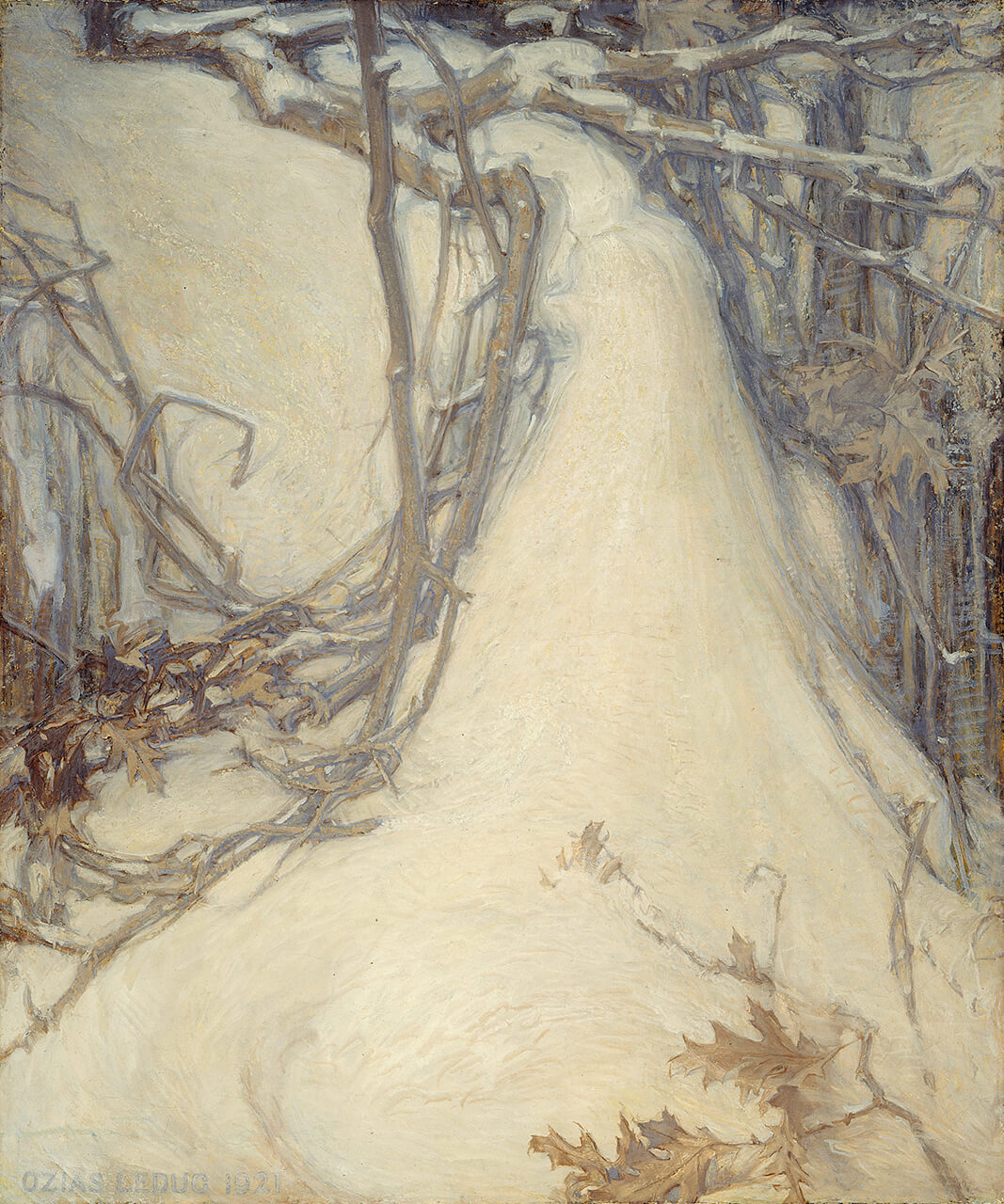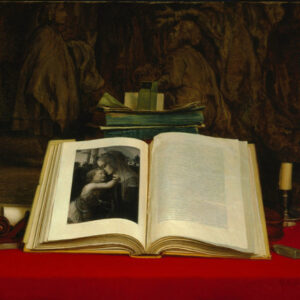Mauve Twilight 1921

Ozias Leduc, Mauve Twilight (L’heure mauve), 1921
Oil on paper mounted on canvas, 92.4 x 76.8 cm
Montreal Museum of Fine Arts
In this painting, Leduc details an oak limb fallen in the snow. Milky tones dominate the composition, which is structured by the complex brownish-grey forms of the branch and the visible marks inscribed by the brush, marks that have their own movement on the surface. The imposing size of the painting distracts from a subject seen from so close; no doubt photography, which can isolate details, played a role in how this work is framed and structured.

The organization of the surface of the painting is closed on three sides by the placement of the branches, and opened up at the bottom by the movement of the snow, which seems to drop out of the picture like a waterfall. The snow begins in the upper centre of the canvas, where the branches cross, and is enclosed by what looks like a palisade on the right and a ladder on the left. The branches form clearly identifiable motifs, including a circle in the shape of a crown placed at the bottom of the ladder.
Five years after completing his cycle of Symbolist landscapes, including Green Apples (Pommes vertes), 1914–15, Leduc returned to the theme with Mauve Twilight, which is in a sense the culmination and synthesis of the series. Here, his experiments with the formal (point of view, perspective), visual and graphic (colour and its application), and iconographic (choice of subject) aspects of landscape find their most mysterious expression. The form chosen here is an even tighter close-up than in Blue Cumulus (Cumulus bleu), 1913, and set in a closed space, as in Day’s End (Fin de jour), 1913. In Leduc’s work, nature often assumes the form of a wall, along the lines of the Mont Saint-Hilaire mountainside. In Blue Cumulus the elements—a fractured tree trunk, its remains extending into a light cloud that heralds the end of the storm—close the design of the painting. In Day’s End, the escarpment plays a similar role, transforming the image plane into a painterly surface for experimentation with colour and texture. Painting is affirmed in the two-dimensional surface; art is expressed in the uphill movement of the composition.
Mauve Twilight refers to the moment of transition between day and evening, an interlude of respite after the workday, a time to slow down and appreciate the passing moment, to reflect and meditate. It is a transitional point between action and rest, when the body and mind slip into another state and welcome the results of the day. The fading light of the setting sun envelops and modifies the forms it touches, charging them with mystery. The strong oak that keeps its leaves all winter is symbolic of continuity and permanence. Its fall announces renewal in the continuous chain from death to life.

 About the Author
About the Author
 More Online Art Books
More Online Art Books
 Acknowledgements
Acknowledgements